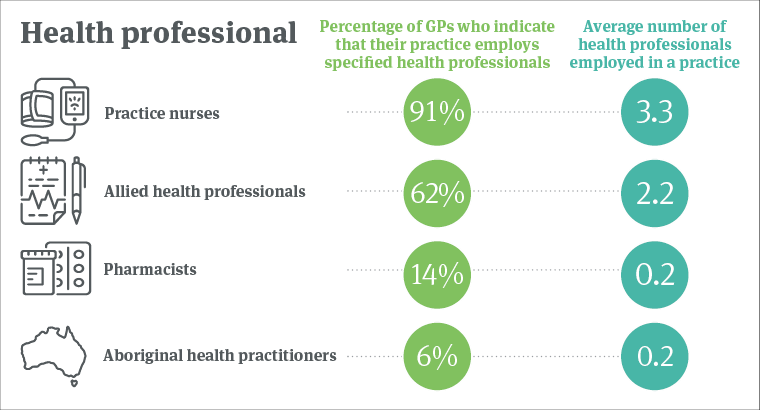Feature
The positive impact of diversity in general practice
A well-resourced and diverse general practice team can help to facilitate collaborative care, support GPs and provide more choice for patients, the General practice: Health of the Nation 2018 report shows.
 A variety of options and cross communication among practitioners helps to supports GPs and their patients, the 2018 Health of the Nation report shows.
A variety of options and cross communication among practitioners helps to supports GPs and their patients, the 2018 Health of the Nation report shows.
With almost 90% of Australians visiting a GP at least once per year, general practice is the first point of contact for most people seeking medical care.
Data collated from the General Practice: Health of the Nation 2018 report reveals that a diverse general practice workforce can support patient access to healthcare services.
General practice diversity can be in the form of GPs’ gender, age and cultural background, as well as the services offered within a general practice.
Health of the Nation found that some patients may feel more comfortable discussing their health issues with GPs from a similar demographic. For example, a female patient may prefer to discuss women’s health issues with a female GP, while a migrant or refugee patient may prefer to speak with a GP from the same cultural background.
The 2018 report reveals that 45% of practising GPs in Australia are female, making the gender balance almost equal to the nation’s population. However, the fact female GPs are more likely to work part time means they represent only 37% of the full-time service equivalent GP workforce.
GPs in Australia are also well distributed among age groups, with the majority (78%) sitting in the 35–64-year age bracket.
A trend in GPs who obtained their basic qualifications outside of Australia or New Zealand has continued since 2015, and these GPs currently represent a higher proportion of full-time service equivalent GPs in Australia.
Providing more choice for patients’ needs can also come in the form of access to a range of other services when they visit their GP, according to the report. Many general practices are co-located with other health services, including nurses, allied health professionals and Aboriginal health workers.
More than two thirds (68%) of general practices are co‑located with a pathology collection centre, and 18% with a skin cancer clinic, Health of the Nation shows.

Figures from Health of the Nation indicate that general practices employ a range of services.
A well-resourced team can mean GPs are also more likely to consult with others within the practice about patient management. This can encourage communication among practice staff and help to facilitate collaborative care among patients, according to findings from the MABEL (Medicine in Australia: Balancing Employment and Life) survey used to pool some of the information for Health of the Nation.
A diverse group of GPs within a practice offering a number of services is recognised as having a positive influence on patient choice and supporting access to healthcare, as well as for GPs and other healthcare workers in supporting these patients through collaborative care.
allied health collaborative care diversity health of the nation patient feedback
newsGP weekly poll
Within general practice, do you think there are barriers to providing flu vaccinations? If so, what are they?